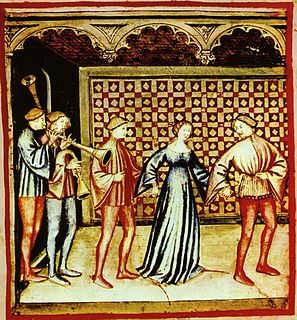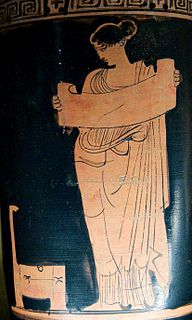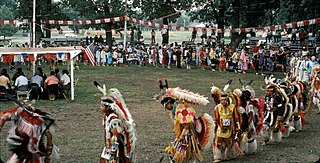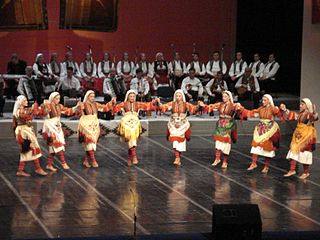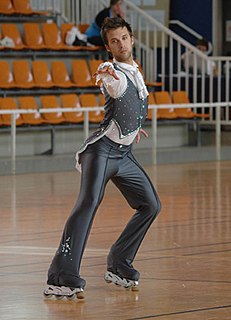This article does not cite any sources .(August 2011) (Learn how and when to remove this template message) |
Loulovikos (Greek : Λουλοβίκος or Λουλουβίκος) is a male dance from Megara Attikis, Greece. It is danced to a song with the same name. The song lyrics refer to Loulouvikos (which is believed to be the name of a boat) which took away the young men from the village. The song pleads with Loulouvikos to bring the young men back.

Greek is an independent branch of the Indo-European family of languages, native to Greece, Cyprus and other parts of the Eastern Mediterranean and the Black Sea. It has the longest documented history of any living Indo-European language, spanning more than 3000 years of written records. Its writing system has been the Greek alphabet for the major part of its history; other systems, such as Linear B and the Cypriot syllabary, were used previously. The alphabet arose from the Phoenician script and was in turn the basis of the Latin, Cyrillic, Armenian, Coptic, Gothic, and many other writing systems.

Dance is a performing art form consisting of purposefully selected sequences of human movement. This movement has aesthetic and symbolic value, and is acknowledged as dance by performers and observers within a particular culture. Dance can be categorized and described by its choreography, by its repertoire of movements, or by its historical period or place of origin.

Megara is a historic town and a municipality in West Attica, Greece. It lies in the northern section of the Isthmus of Corinth opposite the island of Salamis, which belonged to Megara in archaic times, before being taken by Athens. Megara was one of the four districts of Attica, embodied in the four mythic sons of King Pandion II, of whom Nisos was the ruler of Megara. Megara was also a trade port, its people using their ships and wealth as a way to gain leverage on armies of neighboring poleis. Megara specialized in the exportation of wool and other animal products including livestock such as horses. It possessed two harbors, Pegae, to the west on the Corinthian Gulf and Nisaea, to the east on the Saronic Gulf of the Aegean Sea.
The dance is similar to a Sta Tria dance - but during the chorus - the men dancing begin to do squats and move around in the circle doing up to 20 squats at a time. The dance sometimes finishes off with the men breaking off from the circle and end up pushing each other to see who will "fall, as the song refers to it. It is a playful dance done during the Apokries (Carnivale) Season.

Carnival is a Western Christian and Greek Orthodox festive season that occurs before the liturgical season of Lent. The main events typically occur during February or early March, during the period historically known as Shrovetide. Carnival typically involves public celebrations, including events such as parades, public street parties and other entertainments, combining some elements of a circus. Elaborate costumes and masks allow people to set aside their everyday individuality and experience a heightened sense of social unity. Participants often indulge in excessive consumption of alcohol, meat, and other foods that will be forgone during upcoming Lent. Traditionally, butter, milk, and other animal products were not consumed "excessively", rather, their stock was fully consumed as to reduce waste. Pancakes, donuts, and other desserts were prepared and eaten for a final time. During Lent, animal products are no longer eaten, and individuals have the ability to give up a certain object or activity of desire.

